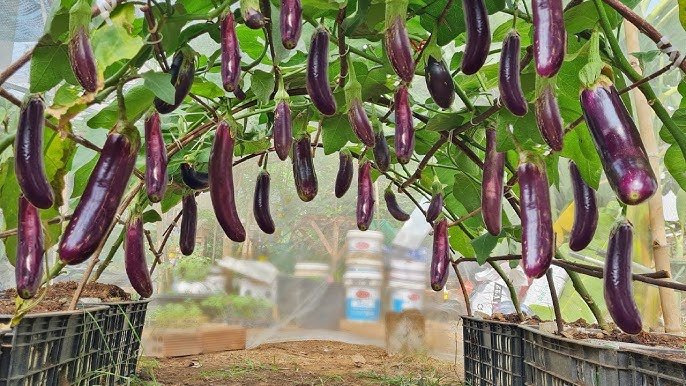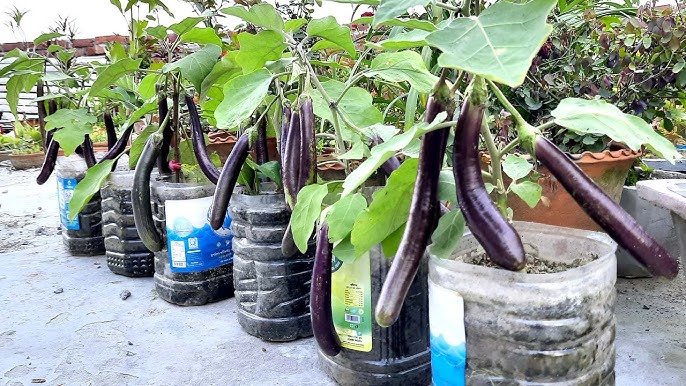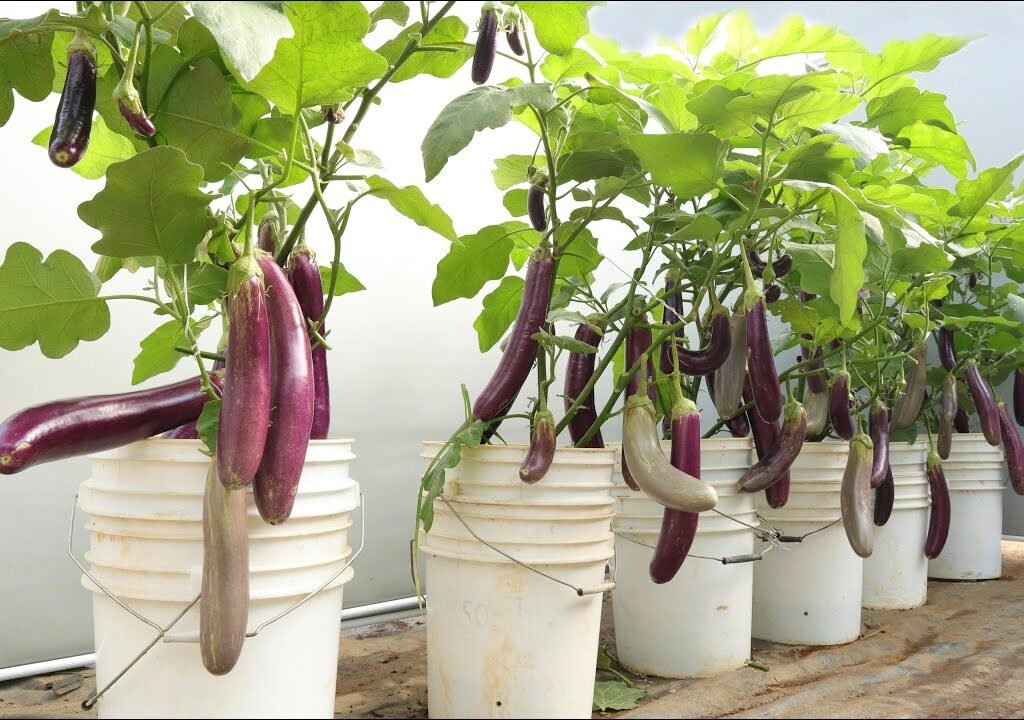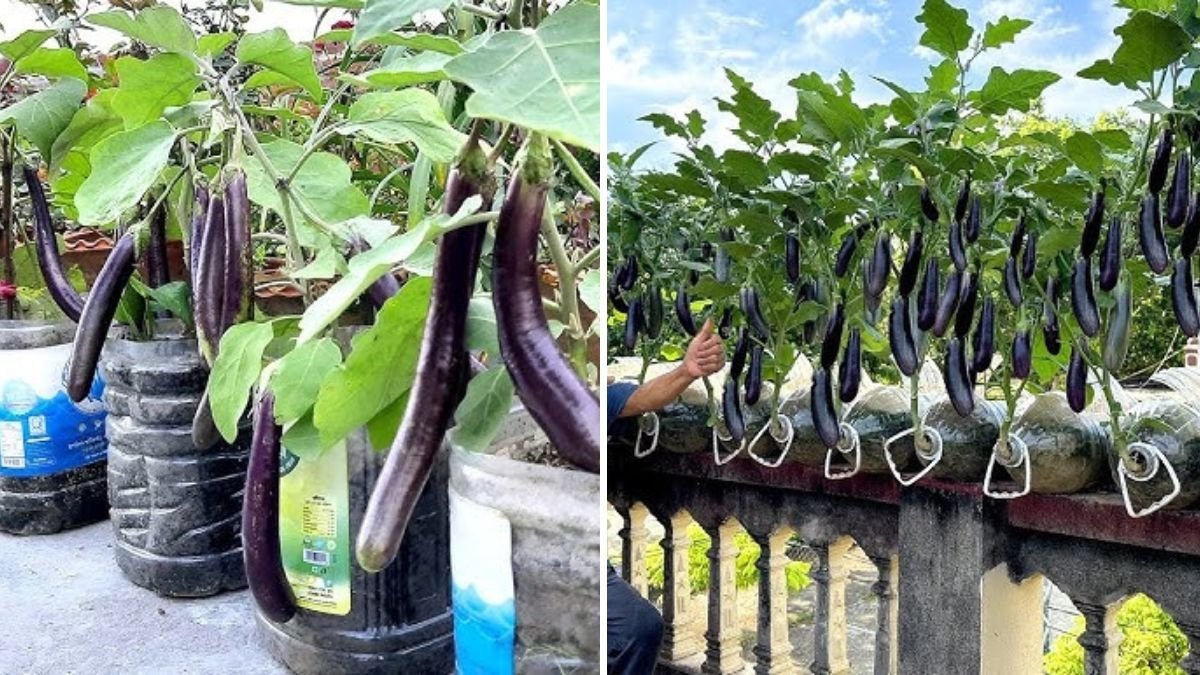Growing eggplants (also known as brinjals or aubergines) can be one of the most rewarding experiences in your home garden. These glossy purple fruits not only add a splash of color to your space but also produce abundantly with the right care. One often-overlooked technique for achieving higher yields and faster production is pruning. Proper pruning helps the plant focus its energy on fruit development rather than excess foliage growth, leading to stronger plants and better harvests.
In this complete guide, inspired by “Pruning Eggplant for Bigger Yield! Faster Production | Tips for Beginners”, we’ll walk through every essential step — from understanding why pruning matters, to how and when to do it correctly.
Why Pruning Eggplants Is Essential

Eggplants are vigorous growers. Left unpruned, they tend to develop a dense canopy of leaves and branches that can:
- Block sunlight from reaching inner parts of the plant.
- Restrict air circulation, increasing the risk of fungal diseases.
- Cause smaller fruit sizes due to competition for nutrients.
By pruning strategically, you can:
- Encourage the plant to produce larger, healthier fruits.
- Improve air movement and light penetration.
- Strengthen the plant’s overall structure for heavier yields.
- Speed up fruit development by channeling the plant’s energy where it matters most.
In short, pruning = smarter growth and more abundant harvests.
Step 1: Prepare Your Eggplants for Pruning

Before you start pruning, make sure your eggplants are healthy and well-established. Typically, eggplants are ready for pruning once they are about 12–18 inches tall and have at least 6–8 mature leaves.
Here’s how to prepare:
- Water the plant a few hours before pruning. This helps reduce stress.
- Sterilize your pruning shears using rubbing alcohol or boiling water. Clean tools prevent disease spread.
- Inspect the plant for pests or signs of fungal issues like powdery mildew. Address any problems first before you prune.
Step 2: Identify What to Prune

Not all parts of the plant should be pruned at once. Focus on removing the following:
- Suckers (side shoots):
These small shoots grow from the leaf axils (the space between the main stem and a leaf). They compete with the main branches for nutrients and should be pinched off when young. - Lower leaves:
Remove the bottom 3–5 leaves near the soil level. These often touch the ground and can harbor soil-borne diseases. Removing them improves airflow around the base. - Crowded branches:
If two branches cross or rub against each other, prune one to prevent damage and promote balanced growth. - Old or yellow leaves:
These don’t contribute to photosynthesis efficiently and may attract pests. Removing them keeps the plant clean and healthy.
Step 3: Shape the Plant

Eggplants grow best when they have an open, well-structured shape. Here’s how to achieve that:
- Main stem focus: Select two to three strong main stems to form the plant’s base structure. Remove excess side shoots and weak stems.
- V-shaped structure: A V or open shape allows sunlight to reach the center of the plant, helping flowers set fruit more effectively.
- Prune gradually: Avoid cutting off too much at once. Remove only about 20–25% of the foliage in a single session to prevent shock.
Regular pruning every 2–3 weeks will help maintain this shape and balance between leaf growth and fruiting.
Step 4: Encourage More Flowers and Fruit
After the initial pruning, your eggplant will redirect energy toward flowering. To maximize yields:
- Pinch off early flowers: If flowers appear too soon (before the plant is strong), pinch them off. This helps the plant grow stronger roots and stems before fruiting.
- Support fruiting branches: Once fruits begin to develop, use stakes or cages to support heavy branches and prevent them from snapping.
- Feed your plant: After pruning, give your eggplant a dose of balanced fertilizer (like 10-10-10 NPK) or compost tea to promote vigorous regrowth.
By controlling early flowers and feeding at the right time, you ensure that the later fruits are larger, juicier, and healthier.
Step 5: Maintain and Monitor After Pruning

Pruning isn’t a one-time task—it’s an ongoing part of plant maintenance. Here’s how to care for your eggplants after pruning:
- Monitor growth: New suckers will continue to appear, especially during warm weather. Keep removing them regularly.
- Water consistently: Eggplants need evenly moist soil. Avoid letting the soil dry out or become soggy.
- Mulch the base: Adding organic mulch around the base helps retain moisture and suppress weeds.
- Watch for pests: Aphids, flea beetles, and spider mites can attack new growth. Use neem oil or organic insecticidal soap as needed.
Common Mistakes to Avoid
Even experienced gardeners sometimes overdo pruning. Here are common mistakes to watch out for:
- Over-pruning: Cutting too much foliage can stress the plant and reduce photosynthesis.
- Pruning at the wrong time: Avoid pruning during extremely hot or dry days. The plant needs time to recover.
- Ignoring tools: Always use clean, sharp shears. Dirty tools spread bacteria and fungi.
- Neglecting aftercare: Failing to water or feed after pruning can weaken the plant.
Pruning should always be gentle and purposeful — you’re shaping growth, not stunting it.
Bonus Tip: Pruning for Continuous Harvest
Eggplants produce best when regularly harvested. Once fruits mature, pick them promptly — this encourages the plant to produce new flowers and fruits instead of wasting energy on overripe ones.
- Harvest when the fruit’s skin is glossy and firm.
- If the skin starts looking dull, it’s a sign of overripeness.
- After harvesting, lightly prune again to remove any exhausted branches or yellow leaves.
This cycle of pruning + harvesting keeps your plant productive throughout the growing season.
Ideal Growing Conditions for Pruned Eggplants
To get the most out of your pruning efforts, make sure your eggplants are growing in ideal conditions:
- Sunlight: 6–8 hours of direct sunlight daily.
- Soil: Well-draining, fertile soil with pH between 6.0–6.8.
- Temperature: Eggplants love warmth; ideal temperature range is 21–30°C (70–85°F).
- Spacing: Maintain at least 18–24 inches between plants to allow good airflow.
- Fertilizer: Apply organic compost or a balanced liquid feed every 2–3 weeks during fruiting.
Proper care combined with effective pruning will transform your eggplants from ordinary to extraordinary.
Final Thoughts
Pruning eggplants may sound intimidating at first, but it’s one of the most powerful techniques to boost yield and improve plant health. With a little patience and attention, even beginners can master it. Remember to start pruning early, remove unnecessary growth, and maintain the plant’s shape throughout the season.
By following these steps, you’ll enjoy stronger plants, faster fruiting, and a harvest full of large, glossy eggplants that make your garden truly stand out.
So grab your pruning shears, step into your garden, and watch your eggplants thrive like never before!






Leave A Comment